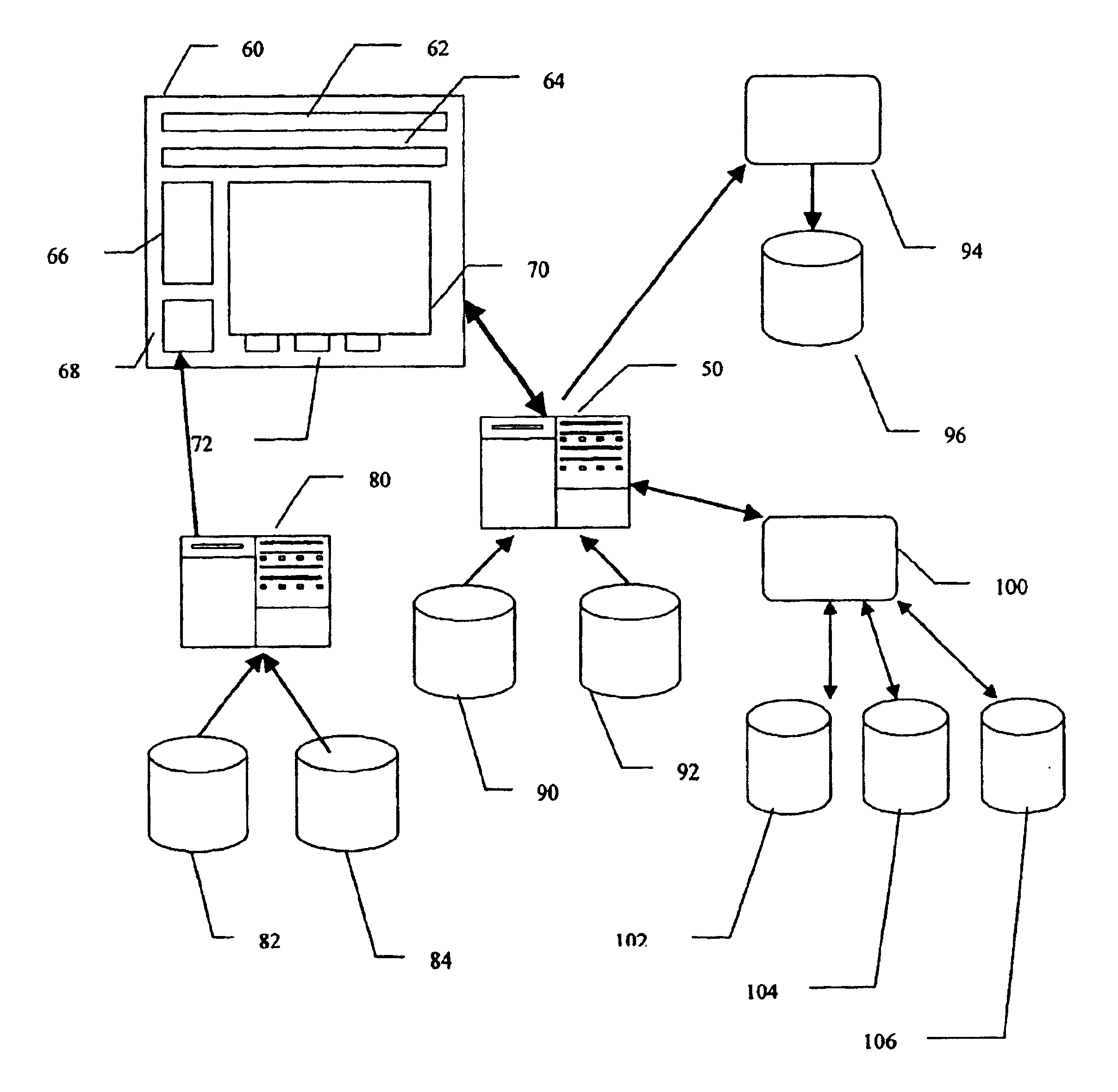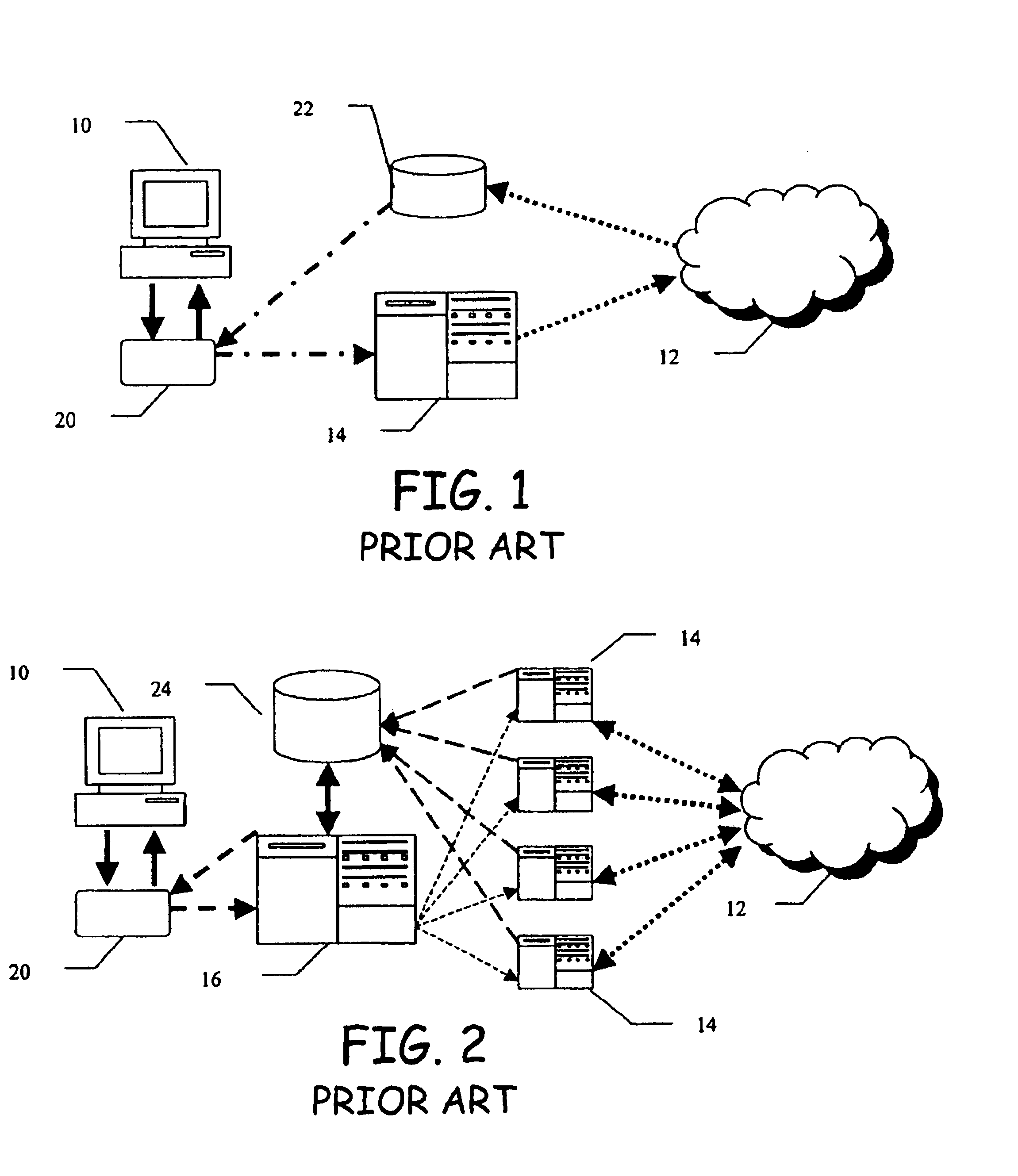Multi-level multiplexor system for networked browser
a networked browser and multi-level multiplexing technology, applied in the field of interfaces and techniques for accessing computerized networks, can solve the problems of cumbersome scrolling through the large amount of downloaded information in a single browser window, new browser window, and presentation of results in a useable format, so as to reduce the amount of client-server traffic, increase the speed of access, and reduce the effect of client-server traffi
- Summary
- Abstract
- Description
- Claims
- Application Information
AI Technical Summary
Benefits of technology
Problems solved by technology
Method used
Image
Examples
Embodiment Construction
[0028]A general familiarity with the operation of the Internet, browsers, markup languages and client-server communications is assumed. For background reference, a technical overview of how a client browser interfaces with a server across the Internet in the context of using multiple search engines is described in U.S. Pat. No. 5,873,080, which is incorporated by reference.
[0029]Referring to FIG. 1, the operation of a prior art primary search engine will be described. A client computer 10 accesses a networked computer system 12, such as the Internet. (In the block diagrams, networked connections, either intranet or internet, are shown in dashed lines and internal connections are shown in solid lines). Typically, the Internet 12 is accessed by a networked browser program 20, such as Microsoft Internet Explorer™ or Netscape Navigator™ executing on the client computer 10. To initiate a search, the user enters search terms or keywords in an entry field on a web page for the web site ass...
PUM
 Login to View More
Login to View More Abstract
Description
Claims
Application Information
 Login to View More
Login to View More - R&D
- Intellectual Property
- Life Sciences
- Materials
- Tech Scout
- Unparalleled Data Quality
- Higher Quality Content
- 60% Fewer Hallucinations
Browse by: Latest US Patents, China's latest patents, Technical Efficacy Thesaurus, Application Domain, Technology Topic, Popular Technical Reports.
© 2025 PatSnap. All rights reserved.Legal|Privacy policy|Modern Slavery Act Transparency Statement|Sitemap|About US| Contact US: help@patsnap.com



